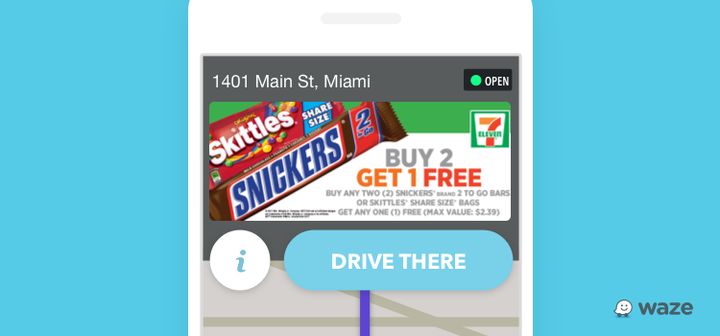
By Marc Plotkin
In 2020, it’s estimated that CPG and consumer products and brands will spend a whopping $10.26 billion on digital advertising. Yes, you read that right. $10.26 billion! This means that many CPG advertisers are shifting away from traditional media programs and betting big on all things digital.
But, in a world where 2.5 quintillion bytes of data are created daily and consumers are bombarded by legions of digital campaigns, how do you ensure that your message stands out and reaches and resonates with your target audience? Whether you’re running video ads, social ads, or programmatic display ads, the four Rs of marketing still apply: you have to reach your consumers at the right time, in the right place, in the right context, with the right message.
Location, Location, Location
For CPG brands, one of the four Rs is particularly potent: place. Approximately 9 out of 10 CPG transactions still occur at brick-and-mortar locations, which means that driving foot traffic is essential to a brand’s success. That’s where location-based marketing comes in. Think about it. Which ad is more likely to score a sale? A tantalizing ice cream ad that’s served up to a consumer walking past a convenience store, or the same ad that plays to someone already in their pajamas on the couch at home? It’s a no-brainer, right? So, it shouldn’t be a surprise that location-targeted ads are projected to represent 45 percent of overall ad revenue in the United States by 2021, according to BIA/Kelsey.
With sales at brick-and-mortar retail locations playing such a critical role in the health of CPG brands, a successful marketing plan has to consider not only the brand itself, but also the retail partner and the end consumer. Let’s take a closer look at how location-based marketing strategies can impact each stakeholder.
Helping Brands Hit the Bullseye
Accurate location data allows brands to serve messaging to consumers in a moment close to when a potential sale would be made—for example, when they’re en route to a store or at the register. It can also help to drive efficiencies, allowing you to target the right audience (by DMA, zip code, or even a specific GPS location) with the right product. This, in turn, can help improve your campaign’s effectiveness by giving your message relevant context and providing your brand with the opportunity to make a meaningful connection with your audience.
Driving Traffic for Retailers
The lines continue to blur between Shopper Marketing and Consumer Trade Promotions, but both initiatives aim to drive in-store sales at specific retailers. Location-based ads placed by CPG advertisers showcase both the brand and the retailer, helping to drive foot traffic and potentially increasing basket size for featured retailers.
The following example is from a P&G campaign that ran on Waze. The ad was served to Walmart shoppers when they were near a Walmart location—a helpful reminder to shoppers to pick up any P&G essentials they might be running low on on the way home. Wazers benefited from a reminder that they were near a Walmart, while Walmart benefited from Wazers who decided to pop in as a result of the P&G advertisement. It’s a win-win-win for all parties!

Paving the Path to Purchase for Consumers
For consumers, location-based ads mean less noise and more relevant content. Ads containing offers and promotions for nearby stores and products provide real value for shoppers, transforming an ad from a potential nuisance into something consumers may be grateful to receive.
Consider the example below from Mars. Here the brand is highlighting an opportunity for Wazers to save on tasty treats at their local 7-Eleven. The ad is served to drivers as they are passing by, letting them know about this great opportunity to save while reminding them there’s a 7-Eleven nearby in case they need to stop for fuel or perk up with a cup of coffee.

Plan Ahead This Year
Spring has officially sprung and, as consumers come out of hibernation, it’s time to think strategically about the powerful role location-based marketing can play in your 2017 plans and beyond. On Waze, we see traffic increase by over 35 percent in the spring compared to winter months, and we know that, at this time of year, Wazers everywhere have spring holidays, vacation, spring cleaning, and yard improvement on the brain. As you start to plan your upcoming campaigns don’t forget to enhance the freshness and relevancy of your seasonal messaging by serving it up in the right context, in the right place.

Need a Shortcut?
- Location-based marketing adds a layer of context and drives efficiencies and effectiveness for CPG brands.
- Consider the benefits for the CPG brand, the retail store, and the consumer.
- Incorporate seasonal messaging into campaigns to keep them fresh and relevant.
This article was originally published in The Compass- an industry resource for mobile, native, and location-based marketing.
